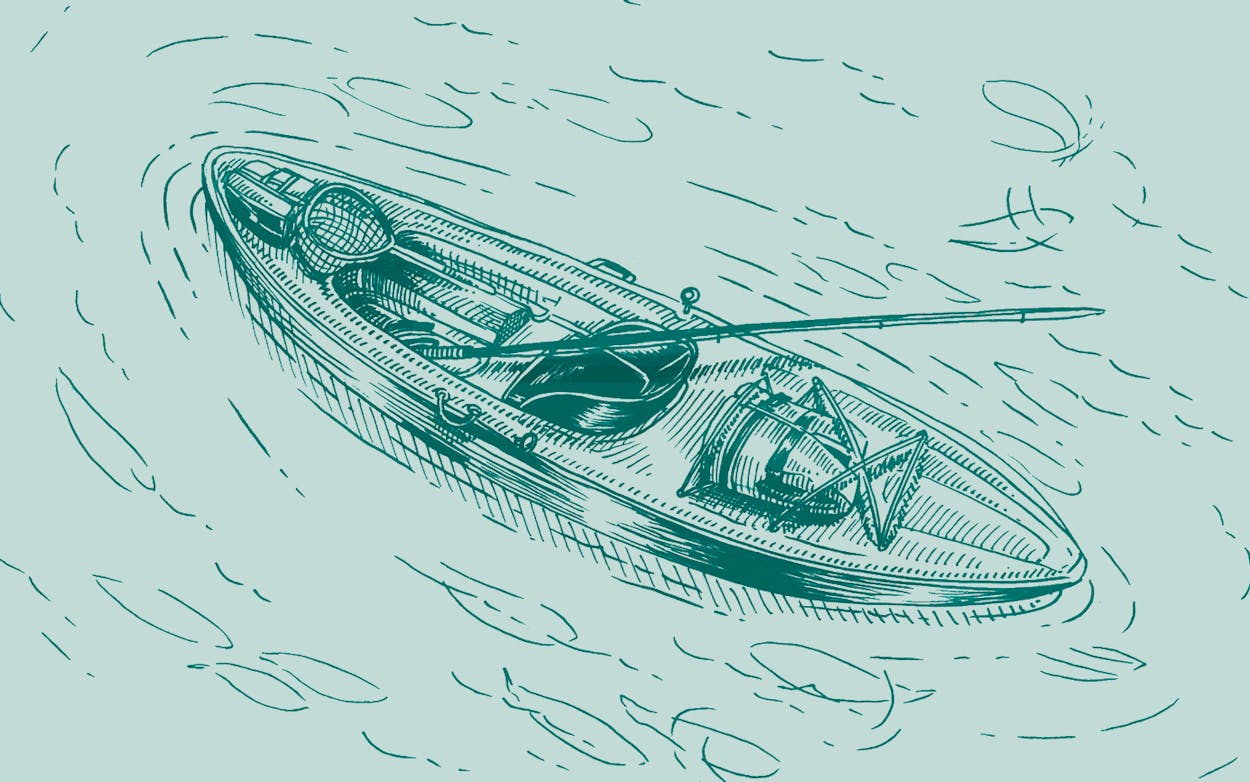So you’re ready to plunge deeper into fishing? Maybe your hometown lake is calling your name, or you’re an adventurous sort who wants to paddle a remote river like the Pecos, or the Neches. Enter kayak fishing. The beautiful marriage of two fun outdoor pursuits—angling and paddling—kayak fishing has exploded in popularity in recent years. And no wonder: it’s easy on the environment, helps you stay in shape while exploring the state’s beautiful waterways, and is relatively affordable. Here’s the gear you’ll need to get off dry land and into a yak.
Kayak
Fishing kayaks are usually wider than touring or whitewater yaks. That’s because width generally equals stability. You don’t want to accidentally tip over when you’re reeling in the big one, do you? On ponds and lakes, consider paying more for a pedal-drive kayak, which you propel with your feet, kind of like riding a bicycle. That way, says Austin-based kayak angling expert Steve Penn, “you’re using your hands to fish.” There is one big downside to wide kayaks: they can be difficult to maneuver. A short yak of ten or twelve feet can help you dodge obstacles in swift and shallow streams. You might also want to kit out your boat with rod holders, a fish finder, and dry bags to keep your stuff from getting wet. Oh, and an anchor will keep you from drifting away when the fish are biting.
Paddle
An expert at your local yak shop can help you calculate the right paddle length, which depends on your height and the width of your yak. Err on the side of too long: a short paddle will hit the sides of your boat.
Life Vest
Look for a personal flotation device, or PFD, that fits snugly but isn’t too bulky, allows a wide range of motion, and has a thin back (important for comfort when sitting in your seat for all-day fishing sessions). Skip the newfangled inflatable PFDs. “Too much maintenance,” Penn says.
Eyewear
Polarized lenses do more than protect your eyes from harmful UV rays. They also cut the reflective glare on the surface of the water, so you can see the fish before you cast. Consider a floatie that will keep your glasses from sinking to the bottom when they inevitably fall off. “The nicer they are, the quicker they sink,” says Baron Boyette, of Gordy & Sons Outfitters, in Houston.
This article originally appeared in the May 2020 issue of Texas Monthly. Subscribe today.
Read more related stories:
The Great Texas Fishing Safari
Kayak Fishing 101: What You’ll Need
How Fishing in Texas Got So Good—and Kind of Weird
Keith Combs Is the Best Bass Fisherman in Texas Waters—But He Has His Eyes Set on More
- More About:
- Hunting & Fishing
- Fishing









